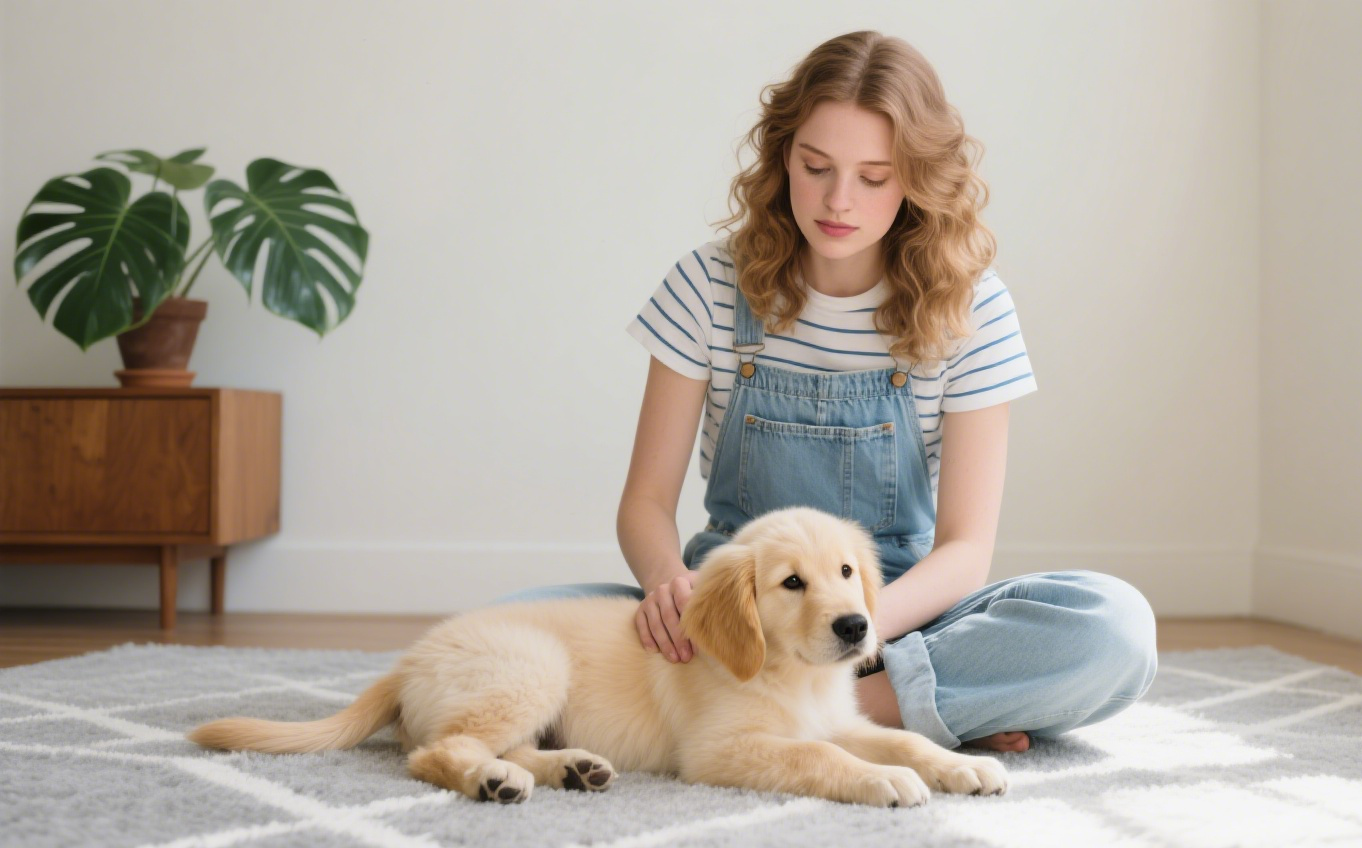I’m Emma. If you’re googling this at midnight while your pup turns the living room into a tuba section—been there. The good news: most gas and mild bloating respond to calmer meals, steady ingredients, and slower transitions. Here’s the clear, vet-informed playbook we use with Ethan and share with every gassy, gloriously goofy dog we love.
Red flag — call your vet now: swollen/tight belly, non-productive retching, pacing, collapse, or sudden severe pain. Deep-chested breeds (e.g., Great Danes) are at risk of GDV (bloat + torsion) and need urgent care. Diet guides like this are for non-emergency gas and mild bloating only.
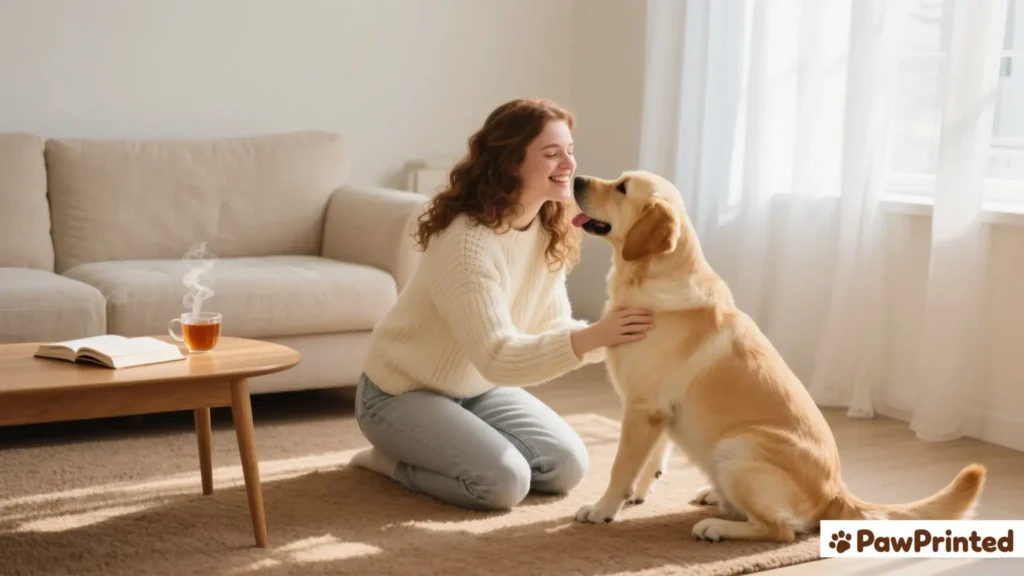
Why Dogs Get Gas & Bloating
- Eating too fast: gulping = extra air + poorly chewed kibble.
- Stacked variables: frequent food switches, extra treats, fatty table scraps.
- Lower digestibility: heavy fillers or too many legumes at once.
- Food intolerance/allergy: consider a simpler formula first—see our Limited-Ingredient Hub.
- Post-meal zoomies: vigorous exercise right after eating isn’t kind to tummies.
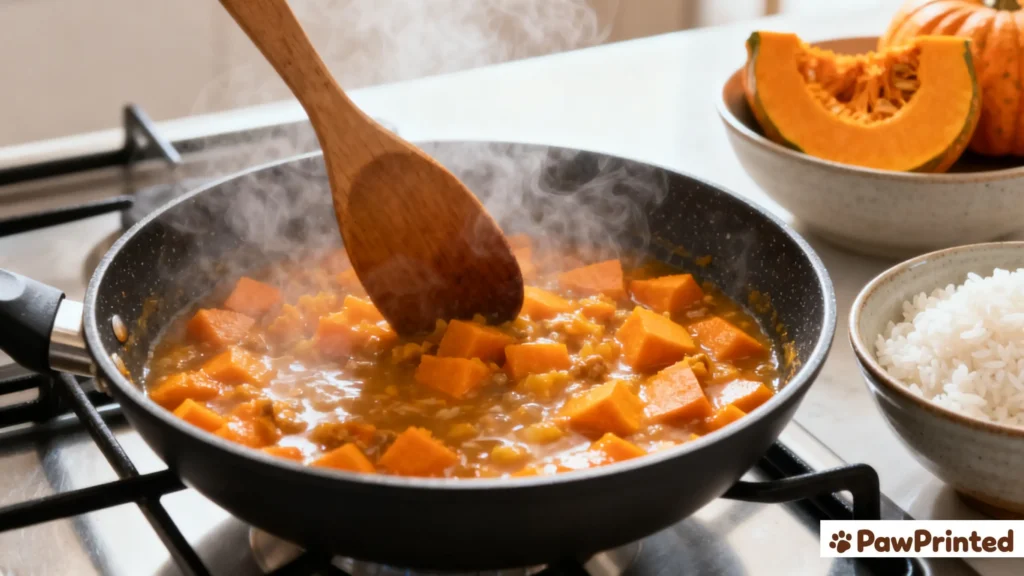
Ingredients That Tend to Be Gentler
We’ve had the best luck with predictable, simple bases—one protein + one carb—then layering fiber and omegas thoughtfully. Start with one change at a time and keep a weekly stool/energy log.
| Component | Gentle Picks | Why It Helps |
|---|---|---|
| Protein | Turkey, salmon, whitefish | Higher digestibility; steady energy |
| Carb | Rice, sweet potato, pumpkin | Predictable starch + soluble fiber |
| Fiber | Pumpkin, oats (small amounts) | Improves stool form; moderates transit |
| Fats | Salmon oil, flax (measured) | Omega-3s support gut & skin |
| Support | Probiotics & prebiotics | Microbiome balance; less gas over time |
Compare these routes with our sensitive-stomach guides to see which lever actually calms your dog’s gut: dry picks, wet picks, and the broader Sensitive Stomach Hub.
Feeding Habits That Reduce Gas
- Smaller, steadier meals: split daily calories into 2–3 feedings.
- Slow the bowl: use a slow-feeder and elevate just enough to promote calm swallowing (avoid excessive height).
- Protect the routine: pick one food, measure by calories, and hold for 7–10 days before judging results. Use our transition timeline.
- Park the extras: minimize rich treats/leftovers during trials.
- Post-meal chill: gentle sniff walks only; no sprints or rough play right after eating.
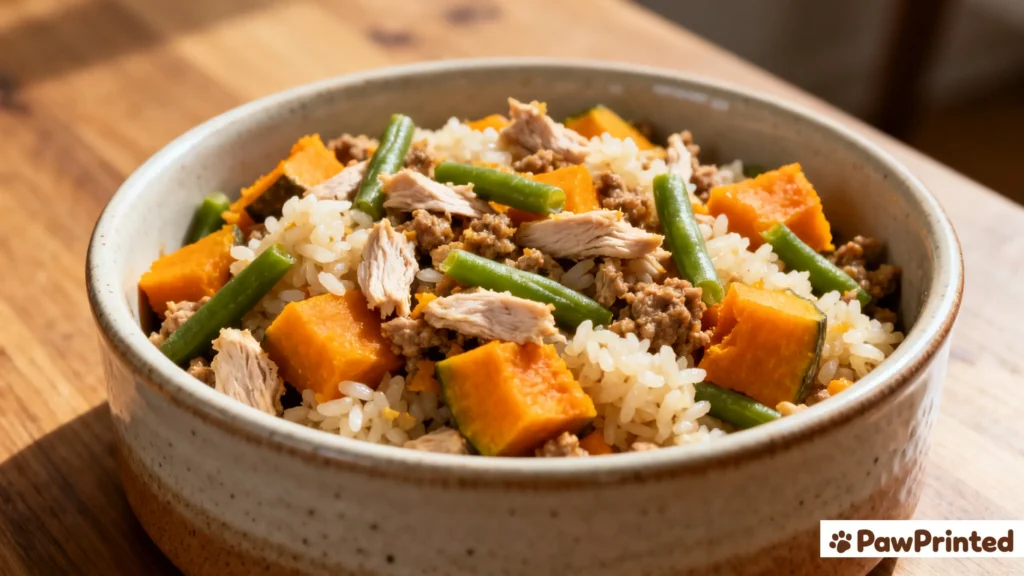
Vet-Approved Food Paths That Often Help
- Limited-Ingredient Diets (LID): one protein + one carb to isolate triggers. Start here if you’re guessing → LID Hub.
- Sensitive-Stomach Formulas: engineered for digestibility and stool consistency → Dry / Wet.
- Probiotic Support: pair your base with targeted strains—see Probiotics for Dogs for what we watch and how we dose.
- Weight Tune-Up (if puffiness persists): extra weight can worsen air gulping and discomfort—notes in Weight Management.
- Homemade, but simple: if you cook, keep variables tight; compare with our gentle LID recipe.
Our Calm-Down Routine (Simple & Trackable)
- Step 1: Pick one gentle base (LID or sensitive-stomach) and measure daily calories.
- Step 2: Transition over 7 days: 25% → 50% → 75% → 100% (see our how-to).
- Step 3: Add one support at a time (e.g., pumpkin, then probiotics) with 5–7 days between additions.
- Step 4: Log stools (1–5 scale), burps, evening energy, and any belly tension. Adjust only one variable at a time.
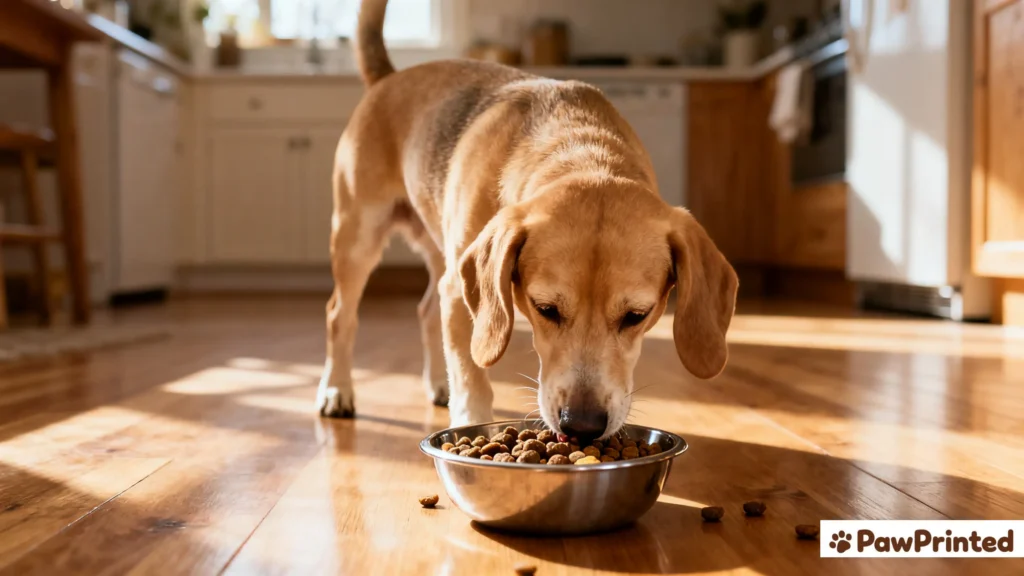
FAQ
Why does my dog fart so much?
Fast eating, frequent diet switches, and lower-digestibility ingredients are common drivers. Start with a simpler base (see our LID Hub) and slow the bowl. Hold changes steady for 7–10 days.
Can bloating be dangerous?
Yes—emergency bloat (GDV) needs urgent care. If your dog has a tight, distended abdomen, is retching without producing vomit, or collapses, go to the vet now. For non-emergency gas, follow our transition steps and keep variables minimal.
What food helps with gas?
We’ve had good results with turkey/salmon bases plus rice or sweet potato. Compare sensitive-stomach dry and wet options, or try a controlled LID trial.
Should I try probiotics or pumpkin first?
Start with one, not both. Pumpkin is a gentle fiber add-on; probiotics target microbiome balance. Introduce one for 5–7 days, track stools/comfort, then consider the other. Details in Probiotics for Dogs.
How fast should I switch foods?
Go slow: 25% → 50% → 75% → 100% over 7 days. Sensitive dogs may need 10–14 days. Use our day-by-day plan and pause if stools loosen.
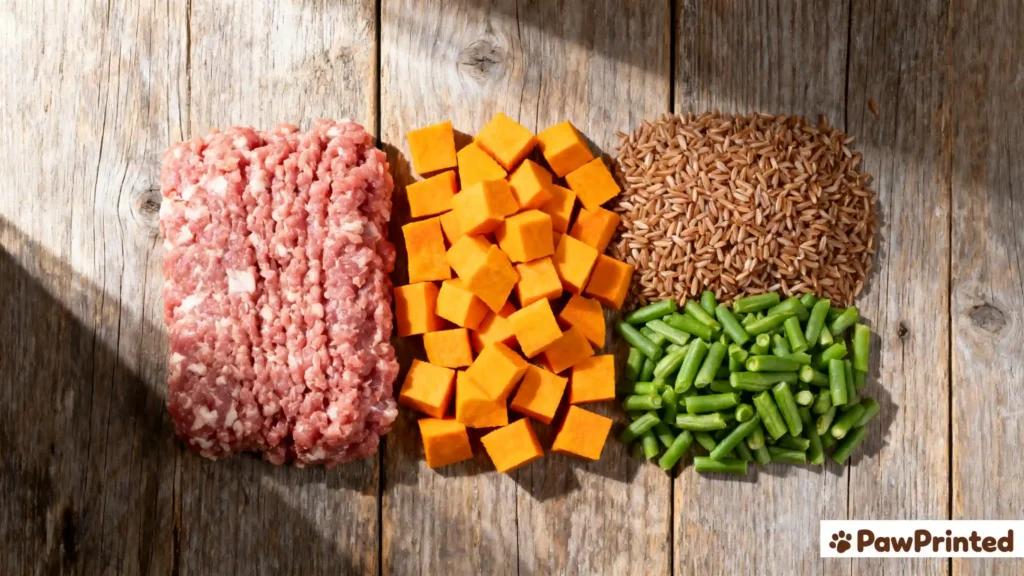
Not every “gas fix” needs a brand jump. Often it’s calmer portions, slower bowls, and fewer variables. If progress stalls, pivot to a simple LID or sensitive-stomach base and keep notes.
Follow PawPrinted on Pinterest
Save calm-gut routines, gentle ingredient swaps, and 7-day transition timelines.

